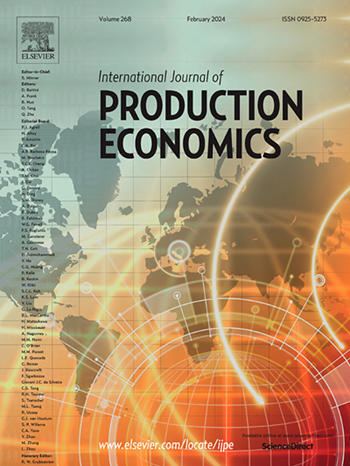成本结构和同类相食对直播定价策略的影响
IF 10
1区 工程技术
Q1 ENGINEERING, INDUSTRIAL
引用次数: 0
摘要
直播作为一种新的在线销售渠道,近年来越来越受欢迎。然而,引入直播并不一定能提高品牌的盈利能力。战略上的成功取决于准确评估何时引入直播,并制定合理的定价策略。从本质上讲,从消费者对产品的感知价值、消费者在渠道间的购买成本和直播渠道的定价策略三个方面来看,直播的引入使消费者的购买决策复杂化,加剧了渠道的相互蚕食。考虑到这些因素,我们分别构建无直播和有直播的模型,并考察两种定价策略,即直播渠道低定价(低定价策略)和直播与在线直销渠道统一定价(统一定价策略),分析双渠道品牌对直播的战略整合,从而为渠道管理和定价策略提供参考。研究发现:(1)当消费者通过线下渠道的购买成本过高或过低时,品牌应避免引入直播,而应选择在线下购买成本适中时引入直播。(2)如果消费者通过直播渠道购买的成本较低,品牌应实施低价策略;否则,采用统一的定价策略更为合适。(3)引入直播后的直播频道价格高于未引入直播的在线直销频道价格。(4)品牌采用最优定价策略引入直播,不仅提升了品牌的收益,还增加了消费者剩余,实现了品牌与消费者的双赢。本文章由计算机程序翻译,如有差异,请以英文原文为准。
Impact of cost structure and cannibalisation on live streaming pricing strategies
Live streaming, as a new online selling channel, has gained popularity in recent years. However, introducing live streaming does not necessarily enhance the profitability of a brand. Strategic success hinges on accurately assessing when to introduce live streaming and crafting a reasonable pricing strategy. In essence, the introduction of live streaming complicates consumers' purchase decisions and intensifies channel cannibalisation from three standpoints: consumers' perceived value for products, consumers' purchasing cost among channels, and pricing strategy of the live streaming channel. Considering these factors, we construct models without and with live streaming and examine two pricing strategies, i.e., low pricing in the live streaming channel (low pricing strategy), and unified pricing in the live streaming and online direct channels (unified pricing strategy), to analyse the strategic integration of live streaming for dual-channel brands, thereby facilitating channel management and pricing strategies. The findings reveal that (1) brands should avoid introducing live streaming when consumers' cost of purchasing through the offline channel is either excessively high or low, opting instead to introduce it when the offline purchasing cost is moderate. (2) If consumers' cost of purchasing through the live streaming channel is low, the brand should implement the low pricing strategy; otherwise, adopting the unified pricing strategy becomes more appropriate. (3) The live streaming channel price after its introduction is higher than the online direct channel price without the introduction of live streaming. (4) When the brand introduces live streaming with the optimal pricing strategy, it not only boosts the brand's revenue but also enhances consumer surplus, achieving a win-win outcome for both the brand and consumers.
求助全文
通过发布文献求助,成功后即可免费获取论文全文。
去求助
来源期刊
CiteScore
21.40
自引率
7.50%
发文量
266
审稿时长
52 days
期刊介绍:
The International Journal of Production Economics focuses on the interface between engineering and management. It covers all aspects of manufacturing and process industries, as well as production in general. The journal is interdisciplinary, considering activities throughout the product life cycle and material flow cycle. It aims to disseminate knowledge for improving industrial practice and strengthening the theoretical base for decision making. The journal serves as a forum for exchanging ideas and presenting new developments in theory and application, combining academic standards with practical value for industrial applications.

 求助内容:
求助内容: 应助结果提醒方式:
应助结果提醒方式:


